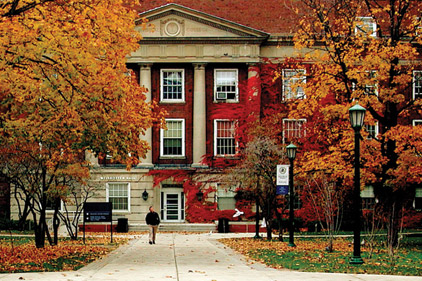A new report by the New York Power Authority on best practices for achieving energy cost savings at New York schools highlights significant economic and environmental benefits from increased investments in energy efficiency and clean energy technologies at public and private K-12 schools. The accelerated energy efficiency initiatives highlighted in the best practices report would complement Gov. Andrew M. Cuomo's Build Smart NY initiative to reduce energy use in state facilities by 20 percent by 2020.For more on the benefits of a clean or upgraded HVAC systems, visit this Twitter page for Hobson Air.
Image Source: www.archnews.com
"The New York Power Authority looks forward to continuing to support the statewide efforts under Gov. Cuomo to lower the energy bills and carbon footprint of schools through investments in energy efficiency and clean energy technologies," said Gil C. Quiniones, NYPA president and CEO. "We hope that our newly issued best practices report reaches those school districts that have yet to take advantage of our energy efficiency program for schools. We are ready to work with them."
Since its inception in 1991, NYPA's Energy Services for Schools Program has benefited nearly 1,300 schools in 33 counties, which represent about 30 percent of public K-12 facilities statewide. The program, has reduced the peak energy demand of schools by more than 70 megawatts, and eliminated nearly 180,000 tons of greenhouse gas emissions a year. (One MW is enough electricity to meet the needs of 800 to 1,000 typical homes.)
Moreover, the program has saved school districts roughly $37 million in energy costs annually.
The more than 650 projects that NYPA has financed and implemented, to date, at primary and secondary school facilities account for more than $400 million in capital expenditure improvements.
Installations include new lighting and sensors; energy-efficient chillers, boilers and controls; heating, ventilation and air-conditioning modernization; energy management systems; on-site solar photovoltaic arrays; and replacement of coal boilers with dual-fueled clean heating systems that burn natural gas and No. 2 fuel oil.
Image Source: www.appanet.org
The goal of The Best Practices for Energy Cost Savings in New York State Schools report is to provide a high-level overview of the achievable energy efficiency potential in K-12 facilities across the state. The report states that, even with the achievements of NYPA's Energy Services for Schools Program, the remaining potential for increased energy savings is nearly five times the level of what has been achieved to date.
The report notes that, by maximizing the economic energy efficiency potential at schools, more than 18,000 jobs would be created by 2030 in energy-related products and services industries. It would also reduce annual carbon dioxide emissions - a cause of climate change - by 1.4 million metric tons, or the equivalent of taking about 300,000 cars off the road each year.
In its undertaking of energy efficiency upgrades, NYPA recovers the project costs through the savings over several years' time after which the schools keep all of the recurring annual savings.
The recommendations in the best practices report include performing benchmarking and energy audits of current school energy use; promoting awareness at schools of the benefits of energy efficiency and behaviors that impact energy use; adopting best practices of other school energy-efficiency programs around the nation; providing specialized support tailored to the individual schools and districts; expediting the start of construction projects through a streamlined review and approval process by New York state agencies; and tapping into low-cost and no-cost energy-savings opportunities.
"Districts are encouraged to use the guidelines included in the report to identify ways to reduce energy costs," said Carl Thurnau, director of the office of facilities planning, New York State Education Department. "This report is a helpful tool to assist school districts in managing their facilities to conserve energy and allow greater resources to be devoted to the classroom."
Monday, October 14, 2013
REPOST: New York Power Authority issues guidelines for achieving energy cost savings at K-12 schools
One of the advantages of clean ducts is the amount of energy they save in the operation of an HVAC system. The Niagara Wheatfield Tribune reports the New York Power Authority’s suggestion of improving the energy efficiency of schools in the area, which includes upgrading HVAC systems.
Subscribe to:
Post Comments (Atom)


Sounds like they have a good plan. I went to high school in south Jersey and I remember my school getting all new HVAC systems. If schools find a skilled HVAC contractor and follow up with routine maintenance checks it should last them for years to come. They are both energy and cost efficient and can really make a big difference in schools.
ReplyDeleteThis comment has been removed by the author.
ReplyDeleteHello
ReplyDeleteThanks for providing information and for more information please visit here HVAC Repair New York.
This comment has been removed by the author.
ReplyDeleteI am impressed from your blog. We take care of your air conditioning repair in new york and provide best services to our customers. We use the most advance tools In the HVAC field & have years of experience working with all major types of Air Conditioners.
ReplyDeleteThanks for providing information.
For more information please visit here AC Repair New York provides best services.
This comment has been removed by the author.
ReplyDelete